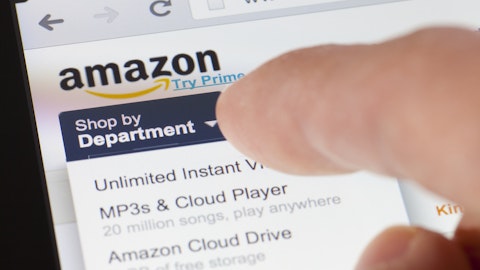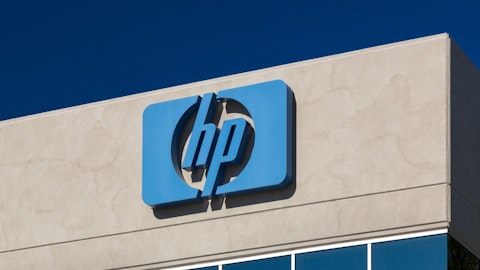Key Risks
There are risks that face management of every company, and HP Inc (NYSE:HPQ) is no exception.
Any given quarter can be impacted by volatile spending trends from consumers and businesses alike. While this doesn’t impact HP’s long-term earnings power, the company’s stock can swing around over short periods of time depending on the trend.
Looking longer term, notebooks (36% of sales) and desktops (21%) account for over half of HPQ’s total revenue.
While these are very large markets, they are coming under pressure from the continued rise in mobile devices and the digitalization of information.
PC’s and printers are technology dinosaurs, and HPQ could struggle to unlock profitable growth over the next five years.
An unexpected shift in market share could also result in negative profitability in the PC segment. Technology is constantly evolving, and no single company has the field cornered. It’s a tough industry to be in.
High profit margins on printers, especially disposables like ink cartilages, attract competition as well.
With no signs of growth in its core markets, HP’s management team is looking into adjacent markets for opportunities to expand the companies reach.
The company has its eyes on 3D printers, large copiers, gaming systems, and high-end laptops in hopes of discovering profitable growth, but the answer is likely years away.
Essentially, HP’s slowly shrinking and highly competitive core markets are pressuring the company to preserve cash flow and find its next growth driver.
There is a lot of uncertainty facing HP’s long-term outlook, and management’s capital allocation decisions over the next five years will define the business for better or worse.
I imagine HP will make for an interesting case study in 10-20 years, and I generally do not like to invest in companies that must significantly evolve their operations to remain relevant.
Dividend Safety Analysis: HP Inc.
We analyze 25+ years of dividend data and 10+ years of fundamental data to understand the safety and growth prospects of a dividend. Hewlett Packard’s dividend and fundamental data charts can all be seen by clicking here.
Our Dividend Safety Score answers the question, “Is the current dividend payment safe?” We look at factors such as current and historical EPS and FCF payout ratios, debt levels, free cash flow generation, industry cyclicality, ROIC trends, and more.
Dividend Safety Scores range from 0 to 100, and conservative dividend investors should stick with firms that score at least 60. Since tracking the data, companies cutting their dividends had an average Dividend Safety Score below 20 at the time of their dividend reduction announcements.

We wrote a detailed analysis reviewing how Dividend Safety Scores are calculated, what their track record has been, and how to use them for your portfolio here.
Hewlett Packard’s Dividend Safety Score is 65, which indicates that its current dividend payment is somewhat safer than average and unlikely to be cut anytime soon.
One reason is the company’s low payout ratio of just 27% of earnings per share and 22% of free cash flow over the last 12 months.
The company plans to return 50-75% of free cash flow to shareholders and has plenty of room to continue paying and moderately growing its dividend.

Source: Simply Safe Dividends
The company’s performance during the last recession also provides clues about its dividend safety.
During the financial crisis, HPQ revenues fell by 3% while the company maintained its dividend. HPQ’s common stock also returned -28% in 2008, outperforming the S&P 500 by 9%.
However, this may not be a good indicator of HPQ’s sensitivity to economic twists and turns since these results were recorded prior to the breakup of the company in 2015.

Source: Simply Safe Dividends
In addition to recession performance, free cash flow generation is a major factor impacting a company’s ability to pay sustainable dividends.
Fortunately, HP has been a cash cow. The company has already generated over $2 billion in free cash flow through the first nine months of 2016. Its business does not require substantial capital to operate, and HP’s economies of scale crank out cash.

Source: Simply Safe Dividends
Another pleasant discovery is found in HPQ’s balance sheet. The company holds $5.6 billion in cash compared to total debt of $6.8 billion.
HP’s cash balance alone could cover the current dividend payment for nearly seven years and provides management with plenty of flexibility.

Source: Simply Safe Dividends
Overall, HP’s dividend is very safe today. The company’s low payout ratios, excellent free cash flow generation, and sturdy balance sheet all provide nice support.



